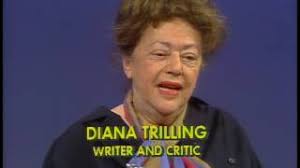29. Miranda Popkey
“The past isn’t dead and buried it isn’t even, etc.”
-Miranda Popkey
The word being elided by the “etc.”
is, of course, “past.” Miranda Popkey knows, and we know, and she knows we know
this because the Faulkner phrase she’s alluding to is one of the most
(over)quoted in contemporary journalism/critical writing. “The past is never
dead. It’s not even past,” runs the original phrase which appeared in Faulkner’s largely overlooked 1951 novel Requiem for a Nun and which has since been
repurposed in countless articles and epigraphs. And it’s easy to see why this
phrase has had such a long afterlife outside of a book that few of its
latter-day citers have likely read. It’s a nifty aphorism that both glibly sums
up much of Faulkner’s project and comments on the continued interpenetration of
past and present that, for many people, defines our social and political
history.
The thing about an aphorism,
though, it its freshness. The form, when practiced correctly, is philosophy in
action. Boiled down to an essential, definitive expression, the aphorism offers
a twist that forces the reader to see the world in a new way. Far from mere
facile phrasemaking, the best aphorisms not only sound good but they are good:
they express an actual, surprising insight into life, reflecting the writer’s
much-considered worldview. And, even taken outside the context of its place in
his novel, where it’s spoken by its central figure, the lawyer Gavin Stevens, Faulkner’s
aphorism is no different. It employs an unexpected phrasing designed to catch
the reader unawares and force that reader to think about the nature of
historical time in a fresh way.
Of course, this freshness has long
since worn off. Famously paraphrased by Barack Obama in a 2008 speech as “The
past isn’t dead and buried. In fact, it isn’t even past,” it’s been cited by
many writers before and after to explain, well, whatever it is the writer wants
to explain. Whether used as a epigraph (as in James Naremore’s cinematic study,
More Than Night: Film Noir in Its Contexts, where it’s mistakenly sourced
to The Sound and the Fury), a concluding flourish (Nation sportswriter Dave Zirin’s article on Peyton Manning and football rape culture), or somewhere in the text in between, Faulkner’s
formulation has been carelessly overused to the point where it no longer tends
to mean too much of anything. This is not to single out Naremore and Zirin (both
of whom are, in their own way, essential) for dishonor but to point out how
even savvy writers can so easily find themselves falling back on obvious
reference points if they aren’t careful.
Miranda Popkey, though, is very
careful. In her novel, Topics of Conversation, every word is precisely considered, nothing left to accident.
So when she has her narrator refer to the Faulkner quotation, she makes sure
she lets us knows it’s played out, first alluding to the less well-known Obama
paraphrase and then cutting it abruptly off with that neatly placed and
slightly snarky “etc.” But as dismissive as she is of the phrase, Popkey/Popkey’s
narrator still feels there’s something to be gained from calling on its
insights to enliven her musings on the possibility of running away and starting
her life over. (After all, as one character later tells the narrator, “It’s a
cliché but it’s a cliché because it is, on some level… true.”) But to do so, she
must first acknowledge that she knows what she’s doing. This signaling
accomplished, she can then have it both ways: draw on the wisdom of the
quotation but distance herself from its overuse. And this is really the only
way to do it. If everything has already been said before, the only thing you
can do is try to say it fresh. And if you can’t manage that, then you’re left
with the next best option: acknowledge that what you’re doing has been done to
death, while hoping like hell it might still retain some minimal, fleeting
capacity to mean.



Comments
Post a Comment